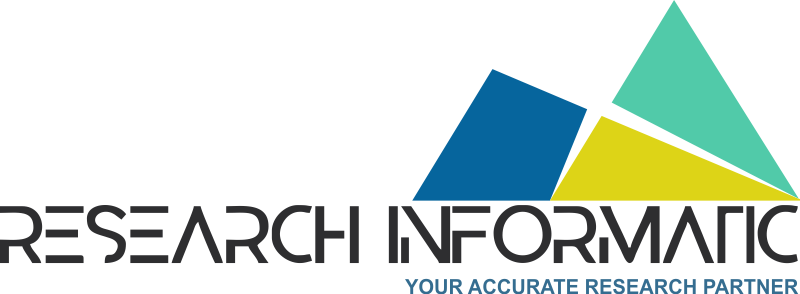
Chemometric Software Market Size, Share & Trends Analysis Report By Type (Exploratory Analysis, Regression, Classification, Others), by Application (Chemistry, Biochemistry, Medicine, Biology, Others), Region (North America, Europe, Asia-Pacific, Middle East & Africa, and South America)—Forecast till 2028
Categories: IT And Telecommunications | Format : 
Global Chemometric Software Market Overview
The Global Chemometric Software Market size is estimated to reach $1.1 Billion by 2026, growing at a CAGR of 12.7% over the forecast period of 2021-2026. Chemometrics is a relatively young discipline, but it has already had a significant influence on the spectroscopic area, to the point that chemometrics software is now a common component of spectroscopic laboratory and process apparatus. The two-part essay begins with a historical summary of chemometrics 'chemometrics' early days.
Report Coverage and Scope
The report "Global Chemometric Software Market" by Research Informatic covers an in-depth detailed analysis for the following segment covered under the scope.
By Type
- Exploratory Analysis
- Regression
- Classification
- Others
By Applications
- Chemistry
- Biochemistry
- Medicine
- Biology
- Others
Geography
- North America
- Europe
- APAC
- RoW
Key Takeaways from Global Chemometric Software Market Report:
- Evaluate market potential through analyzing growth rates (CAGR %), Volume (Units), and Value ($M) data given at country level – for Type, applications, and by different industry verticals.
- Understand the different dynamics influencing the market – key driving factors, challenges, and hidden opportunities.
- Get in-depth insights on your competitor performance – market shares, strategies, financial benchmarking, product benchmarking, SWOT and more.
- Analyze the sales and distribution channels across key geographies to improve top-line revenues.
- Understand the industry supply chain with a deep dive on the value augmentation at each step to optimize value and bring efficiencies in your processes.
- Get a quick outlook on the market entropy – M&A'sM&A's, deals, partnerships, product launches of all key players for the past 4 years.
- Evaluate the supply-demand gaps, import-export statistics and regulatory landscape for more than the top 20 countries globally for the market.
By Type, the market for Regression is estimated to grow at the highest CAGR during the forecast period.
Based on Product Type, Global Chemometric Software Market is segmented into Exploratory Analysis, Regression, Classification and Others. Exploratory Analysis dominated the market in 2020. It is owing to the ability of the workforce to meet the demands of modern technology- and the data-driven economy is assessed using continuously updated, multi-dimensional data. Regression is also the fastest-growing, with a CAGR of 13.3% over the period 2021-2026. It is owing to the increasing demand for Regression in PLS. Moreover, Consumers in Chemometric use univariate statistics widely, from univariate Regression to Analysis of variance.
By Applications, Chemistry is estimated to grow at the highest CAGR during the forecast period.
In 2020, the Chemistry segment accounted for the greatest share of the market, and it is predicted to increase at a CAGR of 13.1% throughout the forecast period. Properties of chemical systems are modelled in descriptive applications to better understand the system's underlying structure and physical interactions. Chemical characteristics are modelled in predictive applications to forecast new features or biochemical trends. The datasets in both circumstances are often big and multivariate. It is leading to the growth of Chemistry in the coming years.
Rest of World to account for the largest market share during the forecast period
North America dominated the Global Chemometric Software Market with a share of 34.9% in 2020. It is owing to the growing demand for Chemometrics in the United States and Canada. Moreover, with the rising number of companies, the demand North America dominated the global share.
Europe is set to grow fastest in the forecast period. It is owing to chemometric approaches being utilized to repair errors and flaws in certain spectroscopic techniques.
Market Dynamics
Driver: Increasing Computation Timing is driving the market.
Due to the distributed number of combinations and the absence of a sufficient description of the methods used, no trends can be drawn from hyphenated MS methods. Regardless, we can deduce that data modification by normalization before multivariate regression analysis is prevalent. It's worth mentioning how to filter noise and reduce data size using wavelet transformations. It is mostly accomplished through CWT or DWT, with the latter being more efficient than the former. The computing time required for posterior chemometric Analysis is reduced when uninformative material is removed. It is set to drive the market over the period 2021-2026.
Key Market Players
Key Players in Global Chemometric Software Market consist of Global Chemometric Software Market report summarizes detailed information by top players as AnalyzeIQ, Calstar, Grams/AI, NIRCal, OPUS, PICS, PLS Toolbox, Pirouette, SIMCA-P, SL Calibration, among others.
Global Chemometric Software Market Growth, Trend and Forecast 2021-2028
Chapter 1 Chemometric Software Market Overview
1.1 Product Overview and Scope of Chemometric Software
1.2 Chemometric Software Market Segmentation by Type
1.2.1 Global Production Market Share of Chemometric Software by Type in 2020
1.2.1 Type 1
1.2.2 Type 2
1.2.3 Type 3
1.3 Chemometric Software Market Segmentation by Application
1.3.1 Chemometric Software Consumption Market Share by Application in 2020
1.3.2 Application 1
1.3.3 Application 2
1.3.4 Application 3
1.4 Chemometric Software Market Segmentation by Regions
1.4.1 North America
1.4.2 China
1.4.3 Europe
1.4.4 Southeast Asia
1.4.5 Japan
1.4.6 India
1.5 Global Market Size (Value) of Chemometric Software (2014-2028)
Chapter 2 Global Economic Impact on Chemometric Software Industry
2.1 Global Macroeconomic Environment Analysis
2.1.1 Global Macroeconomic Analysis
2.1.2 Global Macroeconomic Environment Development Trend
2.2 Global Macroeconomic Environment Analysis by Regions
Chapter 3 Global Chemometric Software Market Competition by Manufacturers
3.1 Global Chemometric Software Production and Share by Manufacturers (2020 and 2020)
3.2 Global Chemometric Software Revenue and Share by Manufacturers (2020 and 2020)
3.3 Global Chemometric Software Average Price by Manufacturers (2020 and 2020)
3.4 Manufacturers Chemometric Software Manufacturing Base Distribution, Production Area and Product Type
3.5 Chemometric Software Market Competitive Situation and Trends
3.5.1 Chemometric Software Market Concentration Rate
3.5.2 Chemometric Software Market Share of Top 3 and Top 5 Manufacturers
3.5.3 Mergers & Acquisitions, Expansion
Chapter 4 Global Chemometric Software Production, Revenue (Value) by Region (2014-2021)
4.1 Global Chemometric Software Production by Region (2014-2021)
4.2 Global Chemometric Software Production Market Share by Region (2014-2021)
4.3 Global Chemometric Software Revenue (Value) and Market Share by Region (2014-2021)
4.4 Global Chemometric Software Production, Revenue, Price and Gross Margin (2014-2021)
4.5 North America Chemometric Software Production, Revenue, Price and Gross Margin (2014-2021)
4.6 Europe Chemometric Software Production, Revenue, Price and Gross Margin (2014-2021)
4.7 China Chemometric Software Production, Revenue, Price and Gross Margin (2014-2021)
4.8 Japan Chemometric Software Production, Revenue, Price and Gross Margin (2014-2021)
4.9 Southeast Asia Chemometric Software Production, Revenue, Price and Gross Margin (2014-2021)
4.10 India Chemometric Software Production, Revenue, Price and Gross Margin (2014-2021)
Chapter 5 Global Chemometric Software Supply (Production), Consumption, Export, Import by Regions (2014-2021)
5.1 Global Chemometric Software Consumption by Regions (2014-2021)
5.2 North America Chemometric Software Production, Consumption, Export, Import by Regions (2014-2021)
5.3 Europe Chemometric Software Production, Consumption, Export, Import by Regions (2014-2021)
5.4 China Chemometric Software Production, Consumption, Export, Import by Regions (2014-2021)
5.5 Japan Chemometric Software Production, Consumption, Export, Import by Regions (2014-2021)
5.6 Southeast Asia Chemometric Software Production, Consumption, Export, Import by Regions (2014-2021)
5.7 India Chemometric Software Production, Consumption, Export, Import by Regions (2014-2021)
Chapter 6 Global Chemometric Software Production, Revenue (Value), Price Trend by Type
6.1 Global Chemometric Software Production and Market Share by Type (2014-2021)
6.2 Global Chemometric Software Revenue and Market Share by Type (2014-2021)
6.3 Global Chemometric Software Price by Type (2014-2021)
6.4 Global Chemometric Software Production Growth by Type (2014-2021)
Chapter 7 Global Chemometric Software Market Analysis by Application
7.1 Global Chemometric Software Consumption and Market Share by Application (2014-2021)
7.2 Global Chemometric Software Consumption Growth Rate by Application (2014-2021)
7.3 Market Drivers and Opportunities
7.3.1 Potential Applications
7.3.2 Emerging Markets/Countries
Chapter 8 Chemometric Software Manufacturing Cost Analysis
8.1 Chemometric Software Key Raw Materials Analysis
8.1.1 Key Raw Materials
8.1.2 Price Trend of Key Raw Materials
8.1.3 Key Suppliers of Raw Materials
8.1.4 Market Concentration Rate of Raw Materials
8.2 Proportion of Manufacturing Cost Structure
8.2.1 Raw Materials
8.2.2 Labor Cost
8.2.3 Manufacturing Expenses
8.3 Manufacturing Process Analysis of Chemometric Software
Chapter 9 Industrial Chain, Sourcing Strategy and Downstream Buyers
9.1 Chemometric Software Industrial Chain Analysis
9.2 Upstream Raw Materials Sourcing
9.3 Raw Materials Sources of Chemometric Software Major Manufacturers in 2020
9.4 Downstream Buyers
Chapter 10 Marketing Strategy Analysis, Distributors/Traders
10.1 Marketing Channel
10.1.1 Direct Marketing
10.1.2 Indirect Marketing
10.1.3 Marketing Channel Development Trend
10.2 Market Positioning
10.2.1 Pricing Strategy
10.2.2 Brand Strategy
10.2.3 Target Client
10.3 Distributors/Traders List
Chapter 11 Market Effect Factors Analysis
11.1 Technology Progress/Risk
11.1.1 Substitutes Threat
11.1.2 Technology Progress in Related Industry
11.2 Consumer Needs/Customer Preference Change
11.3 Economic/Political Environmental Change
Chapter 12 Global Chemometric Software Market Forecast (2021-2028)
12.1 Global Chemometric Software Production, Revenue Forecast (2021-2028)
12.2 Global Chemometric Software Production, Consumption Forecast by Regions (2021-2028)
12.3 Global Chemometric Software Production Forecast by Type (2021-2028)
12.4 Global Chemometric Software Consumption Forecast by Application (2021-2028)
12.5 Chemometric Software Price Forecast (2021-2028)
Chapter 13 Appendix
FAQ
What is Chemometric Software?
Chemometrics is a relatively young discipline, but it has already had a significant influence on the spectroscopic area, to the point that chemometrics software is now a common component of spectroscopic laboratory and process apparatus. The two-part essay begins with a historical summary of chemometrics 'chemometrics' early days.
What is the Chemometric Software market share?
The Global Chemometric Software Market size is estimated to reach $1.1 Billion by 2026, growing at a CAGR of 12.7% over the forecast period of 2021-2026.
What are the key factors driving the Chemometric Software Market?
Increasing Computation Timing is driving the Chemometric Software market. Due to the distributed number of combinations and the absence of a sufficient description of the methods used, no trends can be drawn from hyphenated MS methods. Regardless, we can deduce that data modification by normalization before multivariate regression analysis is prevalent.
What are the top companies in the Chemometric Software Market?
AnalyzeIQ, Calstar, Grams/AI, NIRCal, OPUS, PICS, PLS Toolbox, Pirouette, SIMCA-P, SL Calibration, among others.
which Region holds the largest market share?
North America dominated the Global Chemometric Software Market with a share of 34.9% in 2020. It is owing to the growing demand for Chemometrics in the United States and Canada. Moreover, with the rising number of companies, the demand North America dominated the global share.
Which type have been included in Chemometric Software market report?
Exploratory Analysis, Regression, Classification,Others

Published On:Jan 2021
Base Year:2020
Historical Data:2017-2019
No of Pages:250
Choose License Type
Personalize this Research
- Market Size and Share from 2016 - 2027
- Expected Market Growth Until 2027
- COVID-19 Impact assessment on the market
- Market Dynamics and Impact Analysis
- Segment and region that will drive or lead the market growth and why
- Industry activity comprising Mergers, Acquisitions, Expansion, etc.
- Comprehensive Mapping of the Competitive Landscape
- In-depth analysis of key sustainability strategies adopted by market players
- Global and regional market trends – Current and Future
- Value Chain Analysis
- Porters Five Forces Analysis
- Historical and Current Product Pricing
- Country Cross-Segment Analysis
- Company Profiling
- Player Comparison Matrix
IT And Telecommunications Clients
Chemometric Software Market Size, Share & Trends A...
RD Code : IT22



